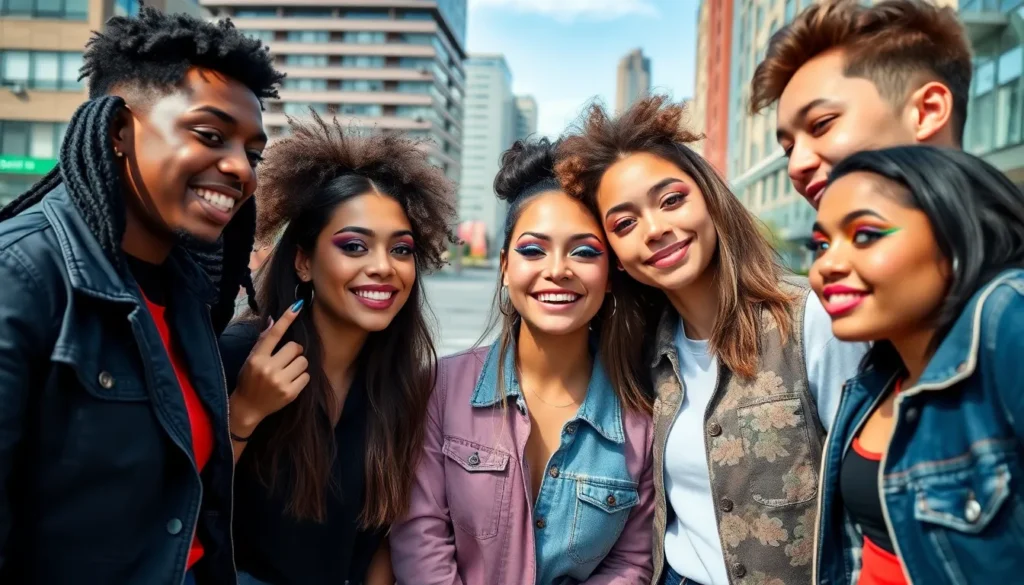Table of Contents
ToggleIn the fast-paced world of social media, the term “viral” gets tossed around like confetti at a parade. But what does it really mean? It’s not just about cute cat videos or dance challenges; it’s the magic that transforms ordinary content into internet sensations. When something goes viral, it spreads like wildfire, captivating audiences and leaving everyone wondering how they missed the memo.
Understanding Viral Meaning In Social Media
Viral content in social media captures attention rapidly. This phenomenon involves the swift spread of information, emotions, or entertainment that resonates with audiences.
Definition of Virality
Virality refers to the ability of content to spread quickly and widely across social media platforms. It occurs when users share content with their networks, prompting further sharing. The sharing creates a ripple effect, allowing a single post to reach millions in a short timeframe. Viral content often evokes strong emotions or thoughts that compel users to engage with it, making it distinct from simply popular content.
Key Characteristics of Viral Content
Viral content shares several key characteristics that distinguish it from ordinary posts. First, emotional resonance captures the audience’s attention, drawing them in. Second, relatability allows users to see themselves within the content, encouraging shares. Third, high visual appeal grabs initial interest, while clarity and brevity facilitate easy consumption. Additionally, timing plays a vital role; relevant topics or trending issues tend to generate more shares. Lastly, an element of surprise or humor often boosts the likelihood of content going viral, enticing users to share it with friends and followers.
Factors That Contribute to Virality

Several elements play a crucial role in determining whether content achieves virality. Understanding these factors enables content creators to craft posts that resonate widely with audiences.
Audience Engagement
Engaged audiences share posts more frequently. Content that connects emotionally often sparks conversations, prompting users to comment or share their own experiences. Strong calls to action can also elevate engagement levels. Encouraging viewers to participate fosters a sense of community, which amplifies sharing. Visual storytelling captivates attention, making it easier for audiences to relate. Tailoring content to specific demographics can enhance personal connections, improving the likelihood of shares. Ultimately, deeper engagement with a post translates into greater visibility across social media platforms.
Timing and Trends
Timing holds tremendous influence over virality. Posts that align with current events or trending topics capture immediate interest, leading to rapid sharing. Observing peak engagement times can optimize posting schedules. Quick reactions to trends can place content at the forefront of discussions. Seasonal or culturally significant events provide additional opportunities for relevant posts. Flexibility in content creation allows for adjustments based on emerging trends. When content aligns with the cultural moment, its potential for virality increases significantly.
The Impact of Viral Content
Viral content significantly influences social media landscapes. Such content enhances brand visibility while reaching vast audiences quickly.
Brand Awareness and Reach
Increased brand awareness derives directly from viral content. Companies benefit as shared posts stage products or messages in front of millions. Viral phenomena can lead to substantial audience growth in a short period, making brands more recognizable. Elevated reach generates opportunities for deeper customer connections and enhanced loyalty. Each share amplifies exposure, positioning brands as relatable and engaging. Brands leveraging viral trends can capitalize on social proof, which fosters trust among potential customers. The combination of engagement and reach propels brands into broader conversations across platforms.
The Role of Algorithms
Algorithms dictate visibility for viral content on social media. When posts resonate emotionally, algorithms favor them in user feeds. Enhanced engagement signals platforms to amplify content reach, fueling virality. Each interaction—likes, shares, comments—increases a post’s chances of appearing to more users. Social media platforms prioritize relevant content, aligning with audience interests. Changes in algorithms can influence what becomes viral, often favoring unique and shareable formats. Brands navigating these algorithmic dynamics can tailor their strategies to maximize visibility, ensuring their content is seen by the largest possible audience.
Case Studies of Viral Campaigns
Numerous campaigns illustrate the dynamics of virality in social media. One notable example is the “Ice Bucket Challenge,” which raised awareness for ALS in 2014. Users poured ice water over themselves, documenting their challenges on social media. The campaign generated over $115 million in donations, showcasing how engaging activities can lead to widespread participation.
Another prominent instance is the “Dove Real Beauty Sketches” campaign, launched in 2013. This campaign highlighted women’s self-perception by contrasting how they viewed themselves with how others saw them. Within a week, the video garnered 60 million views. The emotional impact and relatability fostered significant shares across various platforms.
The “Share a Coke” campaign also stands out, encouraging consumers to find bottles with their names. Personalized labels led to a 2% increase in Coca-Cola’s sales. This strategy targeted consumers directly, making them feel a personal connection to the brand and inspiring many to share photos online.
“#LikeAGirl” is another outstanding example that became a cultural movement. Launched by Always, this campaign aimed to empower young girls. The video reached over 90 million views in just one week, sparking conversations about gender stereotypes. Users resonated with the message, leading to organic sharing and discussions.
These case studies underscore the potential of strategic content in achieving virality. They demonstrate the power of emotional engagement, relatability, and timely relevance. Observing these successful examples provides insights for brands aiming to create viral campaigns that resonate with audiences.
Understanding the meaning of virality in social media is crucial for anyone looking to make an impact online. The ability for content to spread quickly hinges on emotional resonance and audience engagement. As seen in successful campaigns, creating relatable and visually appealing content can significantly enhance sharing potential.
Brands that leverage these insights can effectively navigate the complexities of social media algorithms and maximize their reach. By staying attuned to current trends and maintaining flexibility in content creation, they can increase their chances of achieving that elusive viral status. Ultimately, the power of viral content lies in its ability to connect with audiences on a deeper level, transforming ordinary posts into extraordinary phenomena.










